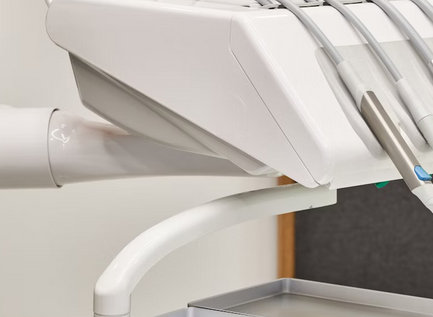Digital dentistry is a broad term encompassing any dental technology that involves the use of computer-based components such as hardware devices and software solutions. The purpose is to enable dental professionals to deliver treatment with the help of computer-aided tools. New possibilities such as digital scanning in dentistry enable dentists for example to take impressions, perform diagnostics or plan treatment without the use of mechanical tools. Digital dental solutions for labs such as impression scanners and design software significantly speed up the process of creating dental products and reduce the amount of manual work.
The history of digital dentistry does not stand alone — it saw daylight for the first time when French dentist Dr. Francois Duret applied principles of CAD/CAM (computer-aided design/computer-aided manufacture) for dental impression taking. This was in 1984 — almost 40 years ago! Since that day, dental professionals from many countries around the world have invented and patented a lot of digital dental solutions to optimize the dental treatment process. However, as it turned out, adoption of this digital technology by dentists is taking its time — our market research shows that nowadays around 85% of dental clinics globally still take impressions the conventional way: with an impression tray
Digital scanners in dentistry can be classified into different types depending on where and how they are used: in dental clinics, facing the patient, or in dental laboratories, not facing the patient. Dental scanning equipment for clinics can be categorized into CBCT or intraoral scanners. Dental Cone beam CT (CBCT) scanners are used for taking X-rays of the mouth area, and intraoral scanners or dental 3D scanners replace the conventional impression method, where patients are asked to sit with gooey impression material in their mouth in order to get an accurate impression. The two scan types can be combined for example when full denture treatment is needed.
Intraoral scans are built up by polygons and can be combined with an image taken by an intraoral camera3. The result is a realistic 3D image of the patient’s dentition on a computer screen or tablet, and allows the dentist to see even the smallest problems and defects of teeth, and other parts of the cavity, that cannot be noticed with the naked eye. Some scanners can even detect caries in the very early stages (which also helps to prevent its further development).
Dental anxiety is a common barrier that prevents many individuals from seeking necessary dental care. Digital dentistry offers innovative solutions to alleviate dental anxiety and create a more comfortable experience. Intraoral scanners eliminate the need for traditional impression materials, reducing discomfort and minimizing anxiety-inducing triggers. Virtual reality (VR) technology is also being integrated into dental practices, providing patients with immersive and engaging experiences that distract from dental procedures, easing anxiety and enhancing overall well-being.
Contributed By Ultimate Dental, Denture, Crown & Implants Lab – Serving The Greenpoint Area and all of NYC https://ultimatedentallab.com/

